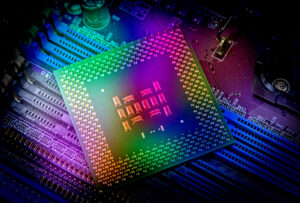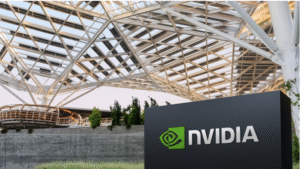Should you buy Nvidia shares in Australia? Here’s everything you need to know about the US$5tn behemoth that is the world’s largest company!
![]() Nick Sundich, November 3, 2025
Nick Sundich, November 3, 2025
Many investors are likely wondering if they should buy Nvidia shares in Australia? As it crossed each trillion dollar mark, obviously, but the latest mark US$5tn is the latest of all – achieved only 3 and a half months after it crossed US$4tn.
Jensen react to NVDA stock price yesterday
byu/DieDieMustCurseDaily inNvidiaStock
It is well ahead of any other company and in fact, it is worth more than the next 10 biggest chipmakers combined. Whether or not NVDA deserves its place, it is where it is. One of the Magnificent Seven stocks, at the forefront of the AI revolution, a wealthmaker for many employees and investors (US$20k invested in 2017 would be worth US$1.4m now), worth more than the GDP of most countries…we could go on and on, but let’s just say it is big and important.
We write a lot about the company, but this article gives a broad overview of the company and addresses the question of what the future holds.
What are the Best ASX Technology Stocks to invest in right now?
Check our buy/sell tips
Who is Nividia? AI Pioneers
According to the company’s Investor Relations department,’ NVIDIA is the pioneer of GPU-accelerated computing’. GPU is short for graphics processing units, and these are computer chips in their own right as well as chip components. These are designed to handle and accelerate graphics workloads and display graphics content to the extent that Central Processing Units (CPUs) could not at the time. This enabled the growth of PC gaming market.
These days, GPUs are behind modern AI, because they act as the ‘brain’ of computers, robots and self-driving cars. In other words, GPUs help them operate by ensuring they can comprehend real-world inputs.
Intel is actually a larger maker of graphic chips than NVDA because most of its CPUs ship with the company’s own integrated graphics silicon. But this goes to show that NVDA’s GPUs are very important to the world. Another client is OpenAI, which is behind Chat-GPT technology.
Most investors will know what Chat-GPT is, but they won’t know that GPT-4 has over 1 trillion parameters. Clearly, very strong supporting technology will be needed. Yet this is not the only use of GPUs, others include (but are not limited to) in cryptocurrency, semiconductors manufacturing, pharmaceuticals, the metaverse and electric vehicles.
Granted, some of these technologies are at early stages, but since NVDA has such a foothold in many of these markets, there is huge opportunity ahead. And given the company has grown its revenues just about every single year, there is confidence this will continue. If you don’t want to take its revenues or share price growth as a sign of investor excitement – ask yourself how many other companies’ most passionate investors have ‘watch parties’ for their quarterly results.
Nvidia's $NVDA Q2 Revenue and Net Income every Q2 since going public
Revenue:
1999: $78M
2000: $170M
2001: $260M
2002: $427M
2003: $460M
2004: $456B
2005: $575M
2006: $688M
2007: $935M
2008: $893M
2009: $777M
2010: $811M
2011: $1B
2012: $1B
2013: $977M
2014: $1.1B
2015: $1.2B… pic.twitter.com/hl7wWqlMd0— Evan (@StockMKTNewz) August 28, 2024
What next?
It is easy to say its going to keep breaking through each trillion-dollar mark and probably will, but it is still anyone’s guess as to when. Obviously, this week was a pivotal one as it crossed US$5 trillion. Jensen Huang said his company was more than just a GPU vendor, but a foundational infrastructure provider for the next era of AI.
He pointed out that the current computing paradigm (general computing) is reaching bottlenecks (i.e. the end of “Moore’s Law” era) and the next era will be “accelerated computing” centres. He mentioned that demand for Nvidia’s next architecture (codenamed “Blackwell”) is “insane”, with everyone wanting first access – it sold 6 million in just 3.5 months. Given it can apparently support models with a trillion-parameter scale, we aren’t surprised. Such power will be crucial for next-generation AI models.
Nvidia expects high utilisation, strong order backlog and margins for these new chips, particularly as it is already a market leader. The more Nvidia can embed itself into data centres, cloud providers, enterprise systems, and sovereign infrastructure, the more sticky and recurring will be its revenues.
Any concerns?
Of course there are concerns, including over supply chains and whether or not AI is a bubble. Consider that no company during the dot com bubble surpassed 6% of US GDP and Nvidia is now 16%. But Huang noted that even though export risk cannot be eliminated entirely, this wouldn’t be enough to put that much of a dent in demand. He also dismissed bubble concerns, pointing to strong fundamentals underlying the valuation milestone.
We’ll address the valuation shortly, but one query that needs to be raised is what about OpenAI being a competitor? The deal between the companies lessens any threat whereby OpenAI will deploy at least 10 gigawatts of AI data centres with NVDA’s chips. But more importantly, this company is not generating anywhere near the revenues Nvidia is and is having to raise equity or debt to fund the deal.
Just how much is it tipped to grow?
Nvidia is covered by nearly 60 analysts on Wall Street and the average target price is US$225.50 up just over 10% from its current levels. It uses a February to January financial year and analysts expect revenues to be US$207bn in FY26, up from US$130.5bn in 2025. Its EPS is expected to be $4.38, up from US$2.94 the year before, and this would be a profit of over $100bn given the current number of shares on issues.
In FY27, $283.7bn revenue and $6.34 EPS which would be a US$154bn profit. Then in FY28, $343.4bn revenue and a $194bn profit.
Nvidia may seem expensive, but it really isn’t
We’ve touched briefly above on the fact that some say it is overvalued. Like many tech stocks though, the answer on whether its valuation is fair is far from a clear course. NVDA’s share price does have some flat days, or even some days of decline – including at some of its quarterly results (but not the most recent set). US government restrictions on the export to chips to certain countriesare a short-term headwind. It is trading at a P/E of ~44.8x for FY26 and a PEG of 1.25x, but for FY26 it is only 30.8x P/E and 0.86x PEG.
Consider that Intel is over 90x P/E and Broadcomm is 44x. Granted Qualcomm is only 15x, Alphabet is 26x, Apple is 32x, Amazon and Microsoft are both 30x.
And so, should you buy Nvidia shares in Australia?
Ultimately, that is a question investors will have to answer for themselves. In our view, dividend investors should not, because although the company pays dividends, they are not that high (i.e. yielding less than 0.1% consistently at the current share price). It is likely to remain this way for a while. Investors uncomfortable with short-term fluctuations shouldn’t either – these can happen at each and every quarterly result.
But as for investors with a long-term horizon, it will be difficult to go wrong with this one, unless things go terribly off the rails at the company, or in regard to the broader AI revolution, or in China.
Blog Categories
Get Our Top 5 ASX Stocks for FY26
Recent Posts
Larvotto Resources is fully funded for its $694M Hillgrove Project
18% Jump for Larvotto Resources as Hillgrove Construction Moves Ahead, Backed by $175M in New Funding Larvotto Resources (ASX: LRV)…
Archer Materials Cracks Quantum Readout Challenge as Stock Surges 12%
Archer Materials Just Solved One of Quantum Computing’s Hardest Problems Archer Materials (ASX: AXE) jumped 12% today after unveiling two…
NVIDIA’s Blackwell Chips Ignite Record Demand in Q3
NVIDIA’s Blackwell Surge Tech investors and growth-focused funds will be breathing a sigh of relief after NVIDIA (NASDAQ: NVDA) delivered…



